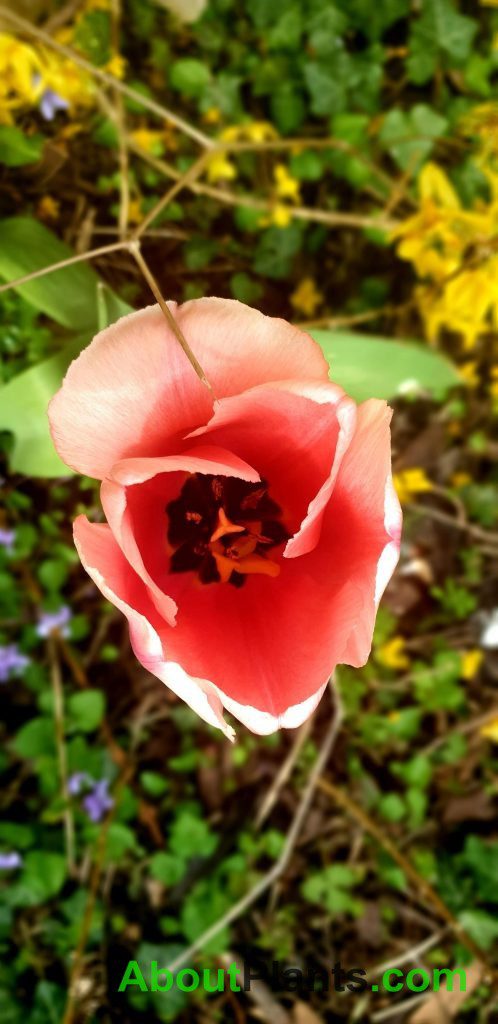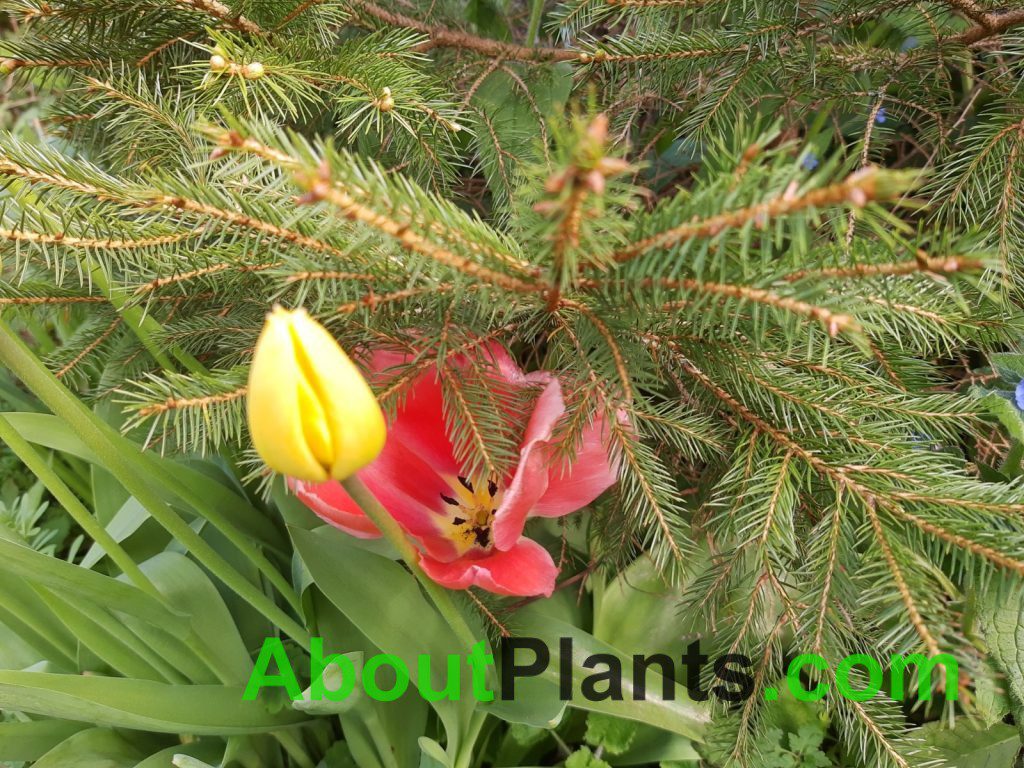Tulips are a popular choice for gardeners in the UK and US. Whether you are in your garden or taking a stroll, you will often see these beautiful flowers, with a shape not dissimilar to a cup. Their distinct, eye catching appearance makes the tulip one of the most recognisable flowers.

Tulip Colours
Tulips are brightly coloured spring blooming flower; they are one of the first bloomers and are often seen as a sign that spring has arrived.
The tulip is part of the same family as the lily.
The botanical name for the tulip is the Tulipa.
Tulip Varieties
There are approximately 3000 different varieties in total, from approximately 150 species of these wonderfully bright eye-catching flowers. This ensures that they appear in almost any colour imaginable. Although most commonly seen in vibrant reds, yellows, pinks and whites.

This attractive characteristic ensures that the tulip is one of the most popular spring bulbs.

The meaning of the tulip is believed to be perfect love, with the different colour varieties having their own significance, many of which are associated with love. This makes the tulip an extremely popular choice in bouquets and gifts for many occasions.

The tulip is a perennial which means it will bloom for a short period each year. A tulip is usually, although not always a single flower on a stem and some varieties may boast up to four flowers on a single stem. Depending in the variety they can grow from anything from just a few inches to over two feet tall. In addition to the array of colours the flower comes in a variety of shapes.
Growing Tulips
Tulips are relatively easy to grow and are perfectly suited to borders or flower beds.

How to Grow
Tulips grow from bulbs and are best planted in the autumn, between October and November, this is because they require that colder winter period of around 15 weeks to stimulate the biochemical response that encourages the growth of roots and formation of the flower.

Bulbs can be purchased from most garden centres and nurseries. When buying your tulip bulbs, you will need to look for the bulbs in the best condition and of the highest quality available. Size matters when buying bulbs, it is usually the case of the bigger the better. An average size for a tulip bulb is around 12cm, this is the measurement around the bulb at its widest point.
They thrive in fertile soil with excellent drainage, so not to become waterlogged. They enjoy full sun and need a little shelter from the wind. Tulip bulbs should be planted approximately 15 cm to 20 cm (6 to 8 inches) beneath the surface, with the pointy part of the bulb facing upwards.

Not planting them deep enough, can hinder their growth or result in them not growing at all, so ensure they are between 15 to 20 cm below the surface or for smaller, or larger bulbs aim for a depth of 3 times the length of the bulb. Remember to watch out for squirrels or other wildlife digging up the bulbs whilst foraging.

Tulips do not do so well in clay or heavy soil, so before planting you can help them by loosening the soil to give the roots space to grow or by adding some nutrient rich compost.
Typically, tulips are a hardy flower, that are easy to grow and maintain.
Tulip Lifecycle
A tulip typically has a lifecycle that lasts a year. As we mentioned earlier in this article, the tulip will only be in flower for part of the year and return the same time the following year.
Once the tulip bulb is planted, the roots begin to grow beneath the ground into a robust root structure to ensure the essential minerals and water is absorbed from the soil.
After the winter ground has thawed, you might notice green shoots appearing through the top layer of soil. Over the next month or so, these shoots continue to grow into stems and around March to May at the top of these stems, the bud will begin to bloom.
Whilst in bloom the plant will begin to grow leaves, which are essential l in converting the sun light into energy through photosynthesis to store for future years.
After a week or two the petals will bend and fall away, the leaves will wither ready to enter a state of dormancy, to begin the cycle again, in the autumn.
Over the years you may see additional flowers popping up near to the original, this is a result of the original bulb reproducing. If this happens, some people may choose to dig them up and replant, allowing enough space between them for each of them to thrive.
Tulip Fire and other Pests
Tulip fire is a fungal infection that affects tulips, it is characterised with brown blotches and patches on the leaves, stem and sometimes the flower petals. They may also struggle to flower. Another sign of an infected plant is withered and misshapen leaves.
Tulip fire only affects tulips, so if you spot a case, then your other plants should not be susceptible. However, you should not ignore even the subtlest of signs as it spreads extremely easily, with the wind blowing the spores and aiding infection between flowers.
When you choose your bulbs, you should look out for any abnormal signs that could be fungus, and discard if you suspect an infection.
Currently there is no treatment for this horrible infection, the only option when a case is found is to dig out the infected bulb and destroy it. Burning is often the most effective option to ensure the infection is contained. With composting there is a risk of the fungus remaining present.
In addition to Tulip Fire, insects can be problematic pests to tulips. There are several commonly found insects which cause problems. Slugs and snails which can damage the leaves by feeding on them, this will reduce the plants ability to build up enough energy resources. Aphids and some types of mites can attack the foliage of the tulip, which can weaken it. A spray of water to wash away such pests is the safest way to treat.
A Few Interesting Facts about Tulips
The tulip originated in Asia but only really grew in popularity once it reached the Netherlands.
The tulip is the national flower of the Netherlands, as well as for Hungary and Turkey.
There was a period in the 17th century that saw tulip popularity and prices reach extraordinary levels; this time is referred to as Tulip Mania!
Thank you for reading this article about the beautiful perennial flowing bulb plant that is the tulip. Please take a look at the pictures and let us know what you think. If you have something that you would like to contribute, get in touch. Take a look at our other articles about plants and share this website with your friends if you have enjoyed reading the information.
